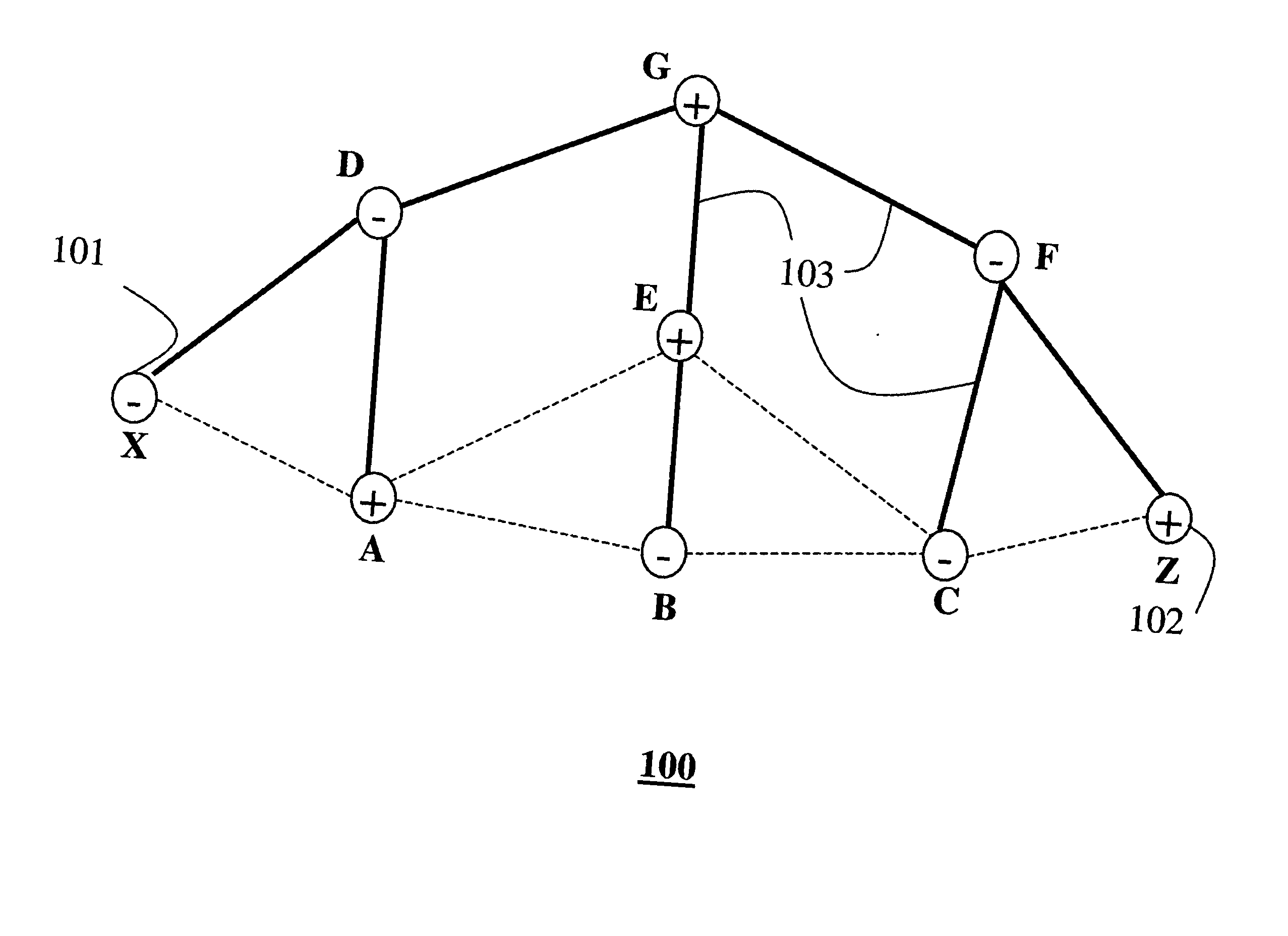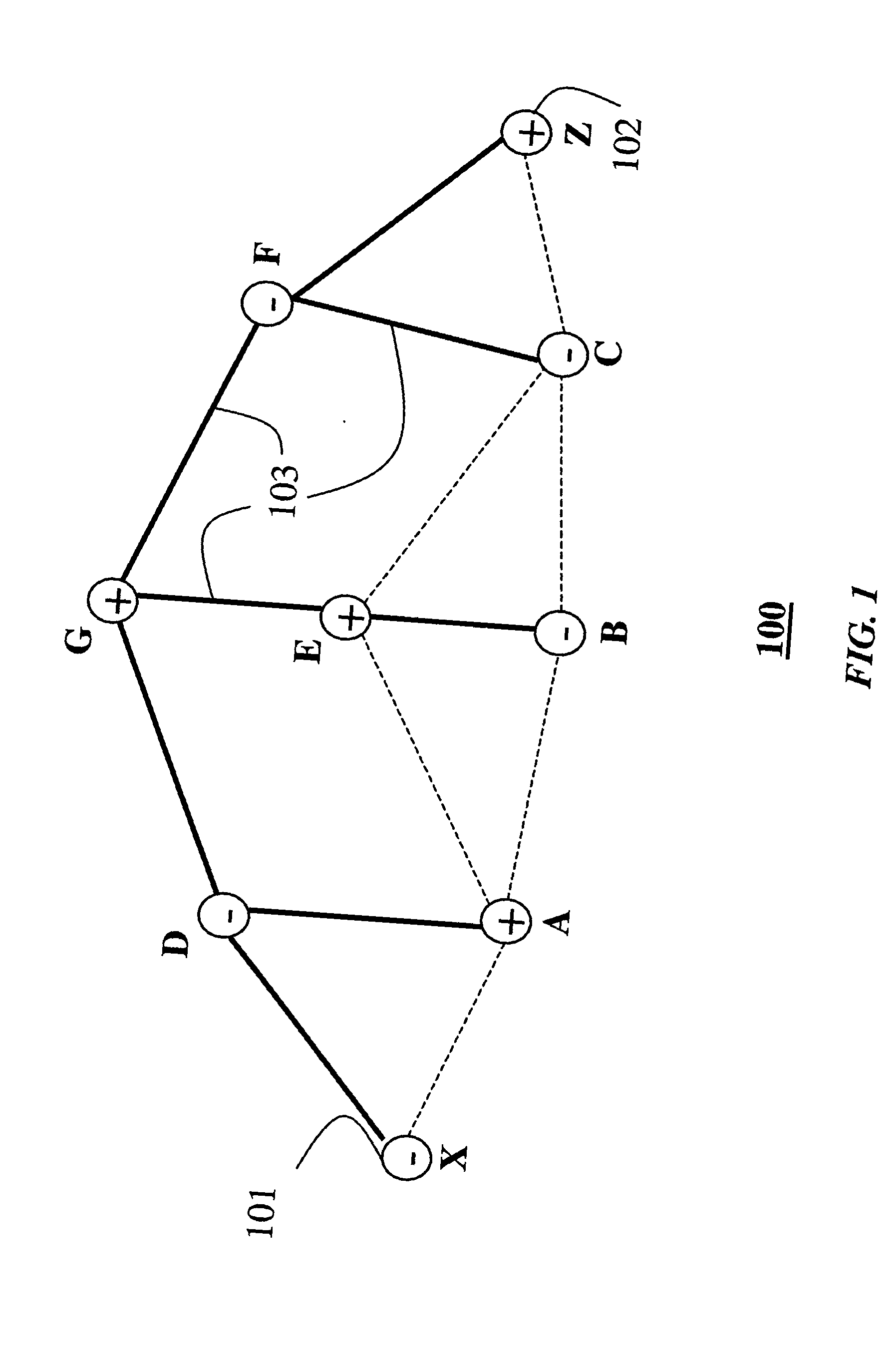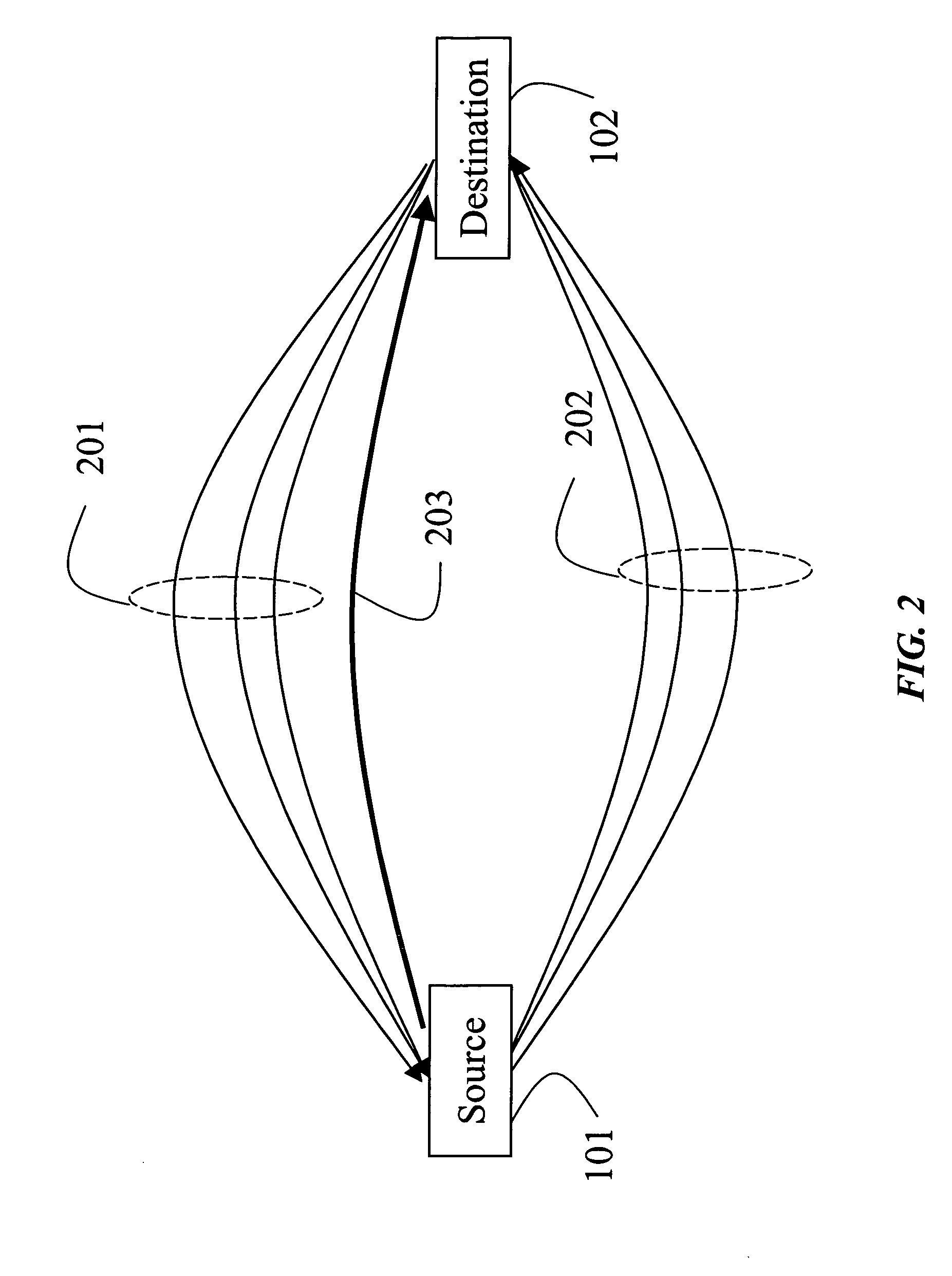Route discovery in ad-hoc networks with data packets
- Summary
- Abstract
- Description
- Claims
- Application Information
AI Technical Summary
Problems solved by technology
Method used
Image
Examples
Embodiment Construction
[0019] Node Definitions
[0020] An ad hoc wireless communications network according to our invention includes a multitude of nodes. Each node includes a transceiver for transmitting and receiving data and control packets.
[0021] We define two type of nodes distinguished by their complexity and routing functionality: simple routing nodes (RN−), and complex routing nodes (RN+). The RN− nodes are extremely simple devices with limited resources, e.g., memory and processing power. The RN− nodes are not used to execute complex routing processes. The RN+ have significantly more memory and processing power and can therefore execute routing algorithms. The RN+ can also use a route cache to maintain routing information.
[0022] Our network 100 is heterogeneous and includes RN+ and RN− nodes that are homogeneously distributed. By that, we mean that any node has about an equal number of neighboring RN+ and RN− nodes. Our nodes only need to be able to generate and forward data and RREP packets. Ou...
PUM
 Login to View More
Login to View More Abstract
Description
Claims
Application Information
 Login to View More
Login to View More - R&D
- Intellectual Property
- Life Sciences
- Materials
- Tech Scout
- Unparalleled Data Quality
- Higher Quality Content
- 60% Fewer Hallucinations
Browse by: Latest US Patents, China's latest patents, Technical Efficacy Thesaurus, Application Domain, Technology Topic, Popular Technical Reports.
© 2025 PatSnap. All rights reserved.Legal|Privacy policy|Modern Slavery Act Transparency Statement|Sitemap|About US| Contact US: help@patsnap.com



